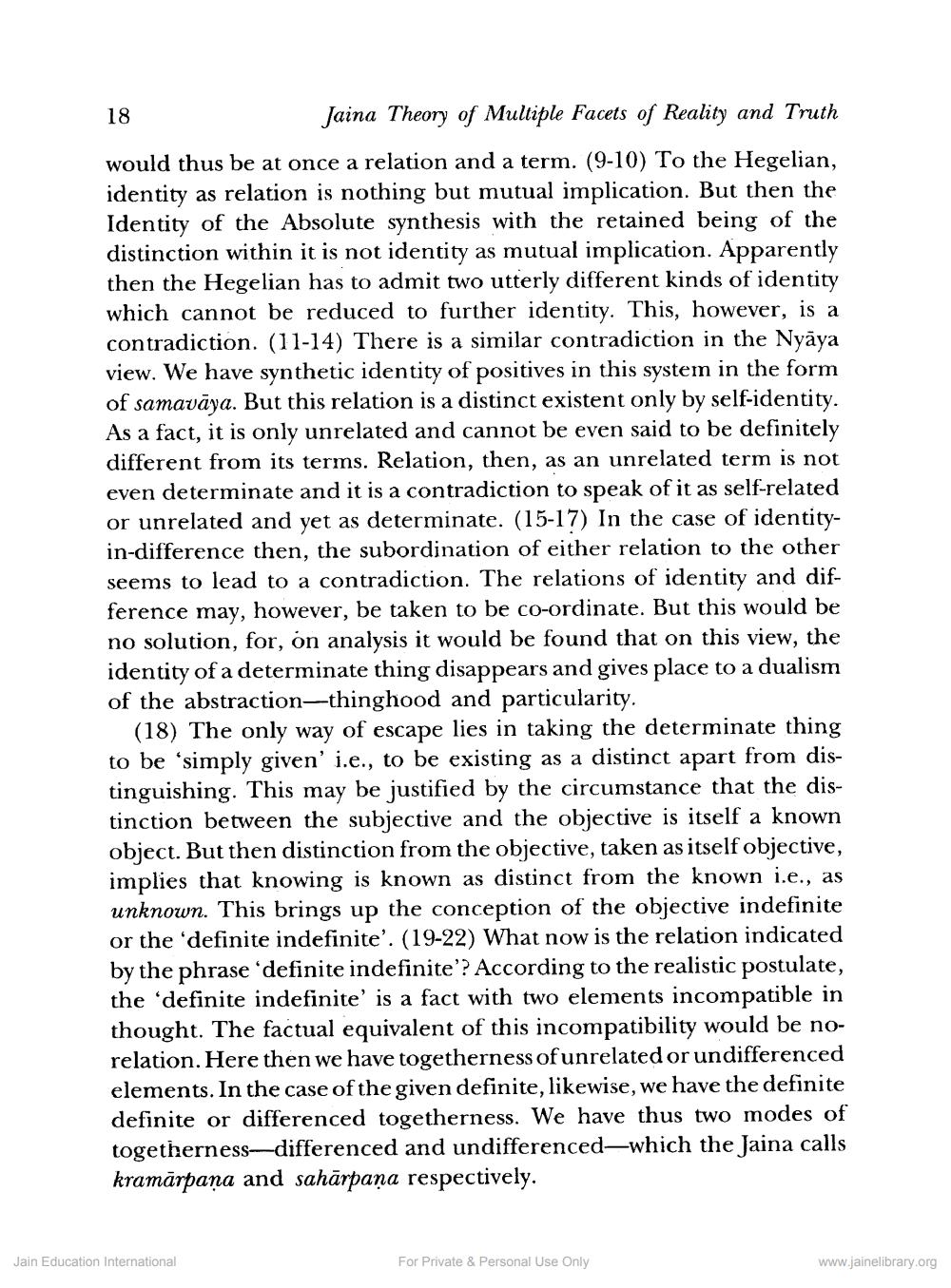________________
Jaina Theory of Multiple Facets of Reality and Truth
would thus be at once a relation and a term. (9-10) To the Hegelian, identity as relation is nothing but mutual implication. But then the Identity of the Absolute synthesis with the retained being of the distinction within it is not identity as mutual implication. Apparently then the Hegelian has to admit two utterly different kinds of identity which cannot be reduced to further identity. This, however, is a contradiction. (11-14) There is a similar contradiction in the Nyaya view. We have synthetic identity of positives in this system in the form of samavaya. But this relation is a distinct existent only by self-identity. As a fact, it is only unrelated and cannot be even said to be definitely different from its terms. Relation, then, as an unrelated term is not even determinate and it is a contradiction to speak of it as self-related or unrelated and yet as determinate. (15-17) In the case of identityin-difference then, the subordination of either relation to the other seems to lead to a contradiction. The relations of identity and difference may, however, be taken to be co-ordinate. But this would be no solution, for, on analysis it would be found that on this view, the identity of a determinate thing disappears and gives place to a dualism of the abstraction-thinghood and particularity.
(18) The only way of escape lies in taking the determinate thing to be 'simply given' i.e., to be existing as a distinct apart from distinguishing. This may be justified by the circumstance that the distinction between the subjective and the objective is itself a known object. But then distinction from the objective, taken as itself objective, implies that knowing is known as distinct from the known i.e., as unknown. This brings up the conception of the objective indefinite or the 'definite indefinite'. (19-22) What now is the relation indicated by the phrase 'definite indefinite'? According to the realistic postulate, the 'definite indefinite' is a fact with two elements incompatible in thought. The factual equivalent of this incompatibility would be norelation. Here then we have togetherness of unrelated or undifferenced elements. In the case of the given definite, likewise, we have the definite definite or differenced togetherness. We have thus two modes of togetherness-differenced and undifferenced-which the Jaina calls kramarpana and sahārpana respectively.
18
Jain Education International
For Private & Personal Use Only
www.jainelibrary.org




